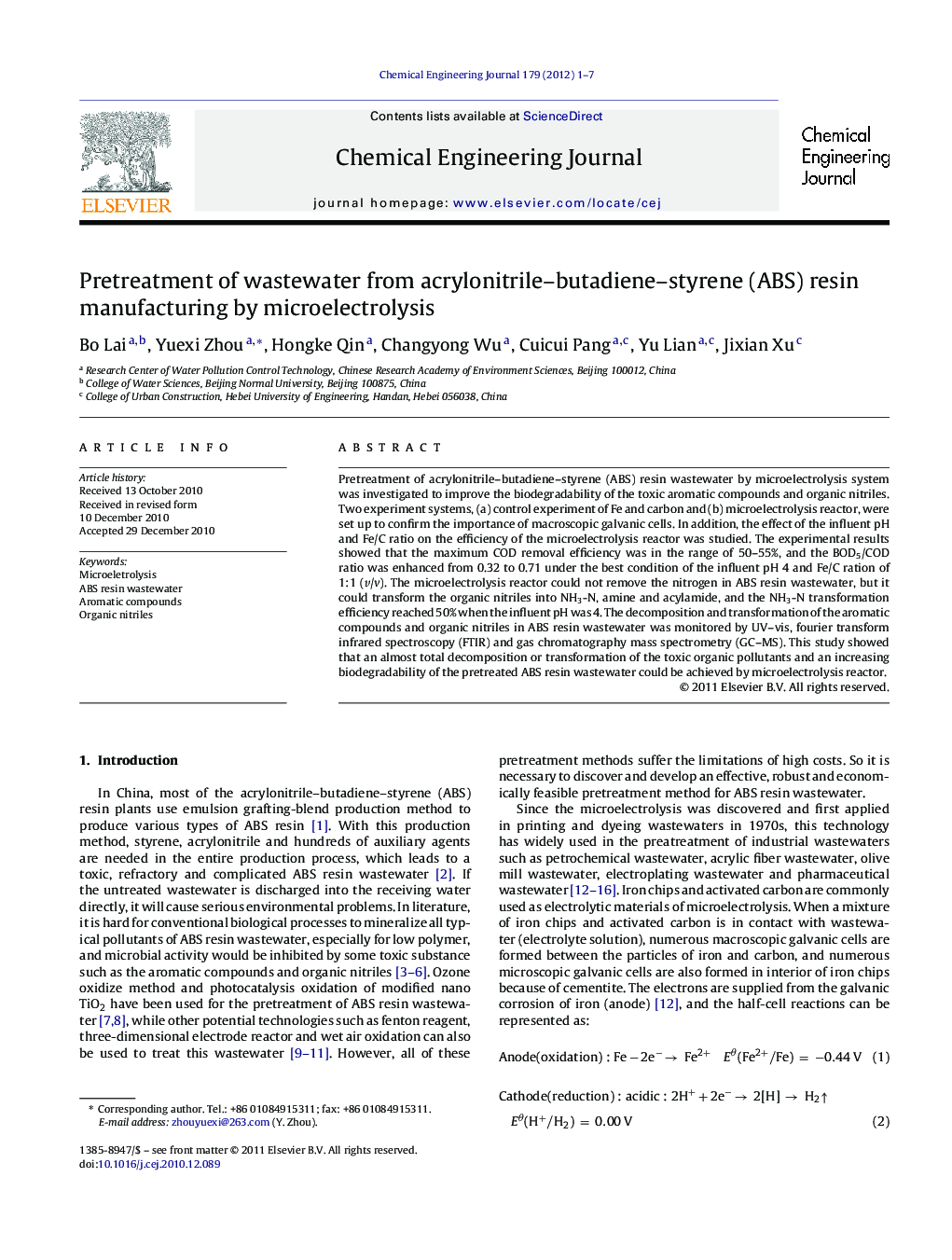| Article ID | Journal | Published Year | Pages | File Type |
|---|---|---|---|---|
| 150390 | Chemical Engineering Journal | 2012 | 7 Pages |
Pretreatment of acrylonitrile–butadiene–styrene (ABS) resin wastewater by microelectrolysis system was investigated to improve the biodegradability of the toxic aromatic compounds and organic nitriles. Two experiment systems, (a) control experiment of Fe and carbon and (b) microelectrolysis reactor, were set up to confirm the importance of macroscopic galvanic cells. In addition, the effect of the influent pH and Fe/C ratio on the efficiency of the microelectrolysis reactor was studied. The experimental results showed that the maximum COD removal efficiency was in the range of 50–55%, and the BOD5/COD ratio was enhanced from 0.32 to 0.71 under the best condition of the influent pH 4 and Fe/C ration of 1:1 (v/v). The microelectrolysis reactor could not remove the nitrogen in ABS resin wastewater, but it could transform the organic nitriles into NH3-N, amine and acylamide, and the NH3-N transformation efficiency reached 50% when the influent pH was 4. The decomposition and transformation of the aromatic compounds and organic nitriles in ABS resin wastewater was monitored by UV–vis, fourier transform infrared spectroscopy (FTIR) and gas chromatography mass spectrometry (GC–MS). This study showed that an almost total decomposition or transformation of the toxic organic pollutants and an increasing biodegradability of the pretreated ABS resin wastewater could be achieved by microelectrolysis reactor.
